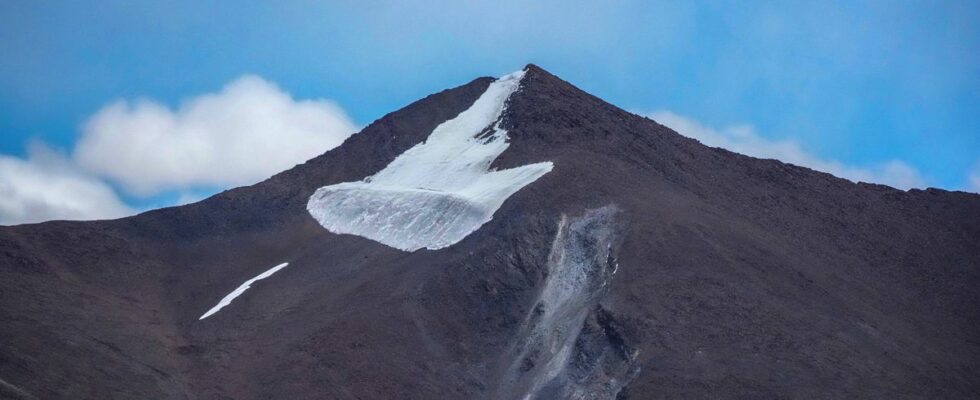It floats on the glaciers of the whole world an air of cemetery of the elephants. Still visible, but already doomed. “Whatever the climate scenario”, at least a third of the glaciers classified as World Heritage of Humanity will disappear by 2050, warns Unesco a few days before COP 27 in Egypt. It is already too late for Yellowstone, Kilimanjaro, the Dolomites or the glaciers of the Pyrenees-Mont Perdu in France and Spain.
Even by limiting global warming to +1.5°C compared to the pre-industrial era, the initial objective of the Paris agreements which is already on the verge of being exceeded, they will disappear. Unesco has conducted a study, covering 18,600 glaciers of 66,000 km² in total spread over 50 World Heritage sites, or 10% of the total glacial surface of the earth.
Total disappearance in Africa
On a third of these sites, the glaciers will completely disappear. Melting can be seen everywhere, and mainly in North America and the Arctic. All the glaciers classified in Africa will disappear by 2050, in particular those of Kilimanjaro National Park, in Tanzania, or Mount Kenya. Three classified sites in Russia will also see their glaciers melt completely. In total, the glaciers of 17 World Heritage sites will no longer exist by 2050, projects UNESCO, based on an analysis of satellite data carried out with the International Union for the Conservation of Nature (IUCN ).
The others “could be saved if we limit global warming to 1.5 degrees” by a “drastic” reduction in greenhouse gas emissions, warns the organization. If greenhouse gas emissions remained at their current level, “about 50% of world heritage glaciers could almost completely disappear by 2100”, still alarms the organization.
Millions of people exposed to natural disasters
World Heritage glaciers melt at a rate of 58 billion tonnes of ice each year, the volume of water used annually by France and Spain, contributing 5% to global sea level rise, according to the report. According to the report of the Intergovernmental Panel on Climate Change (IPCC) published in the spring, the melting of ice and snow is one of the ten major threats caused by global warming.
The speed of the retreat of the glaciers “worries”, especially since “the melting is accelerating”, details Tales Carvalho Resende, co-author of the study. The impact will be “environmental, on biodiversity and on water resources”, he underlines, without “forgetting that these glaciers also have cultural importance for local communities”. The melt exposes “millions of people” to “lack of water and increased risk of natural disasters”, adds Bruno Oberle, Director General of IUCN, in the press release.
Beyond a call for a reduction in emissions, Unesco calls for the creation of an “international fund for the monitoring and preservation of glaciers”. “There is still a fairly significant lack of data”, points out Tales Carvalho Resende. Moreover, “even if we drastically stop emissions, the glaciers will continue to retreat” and “we will have to put in place adaptation actions” in the face of the inevitable upheavals that this will cause, he notes.

